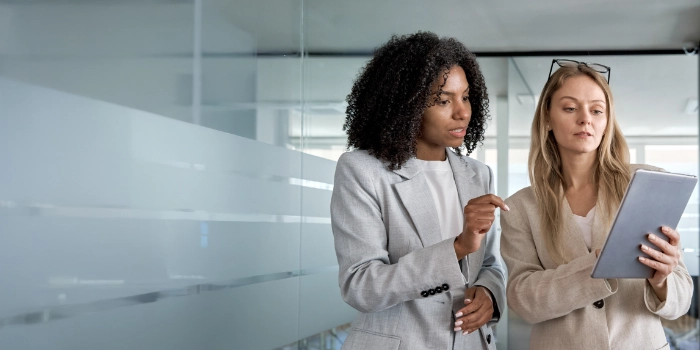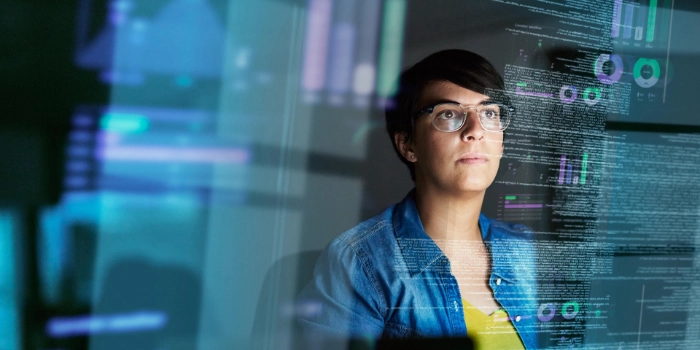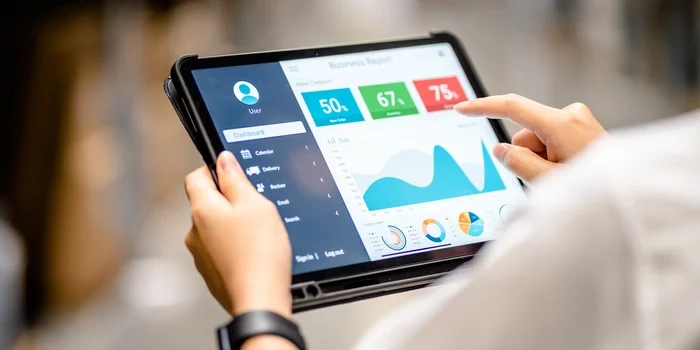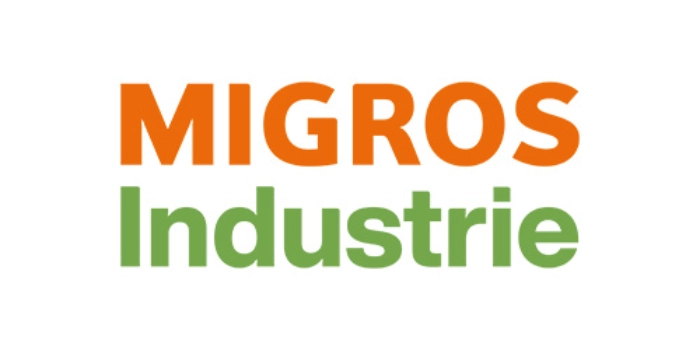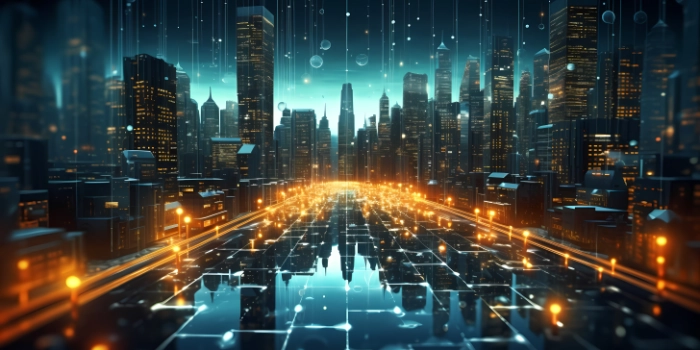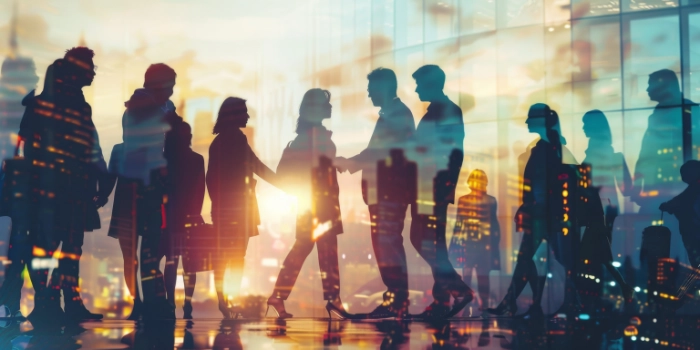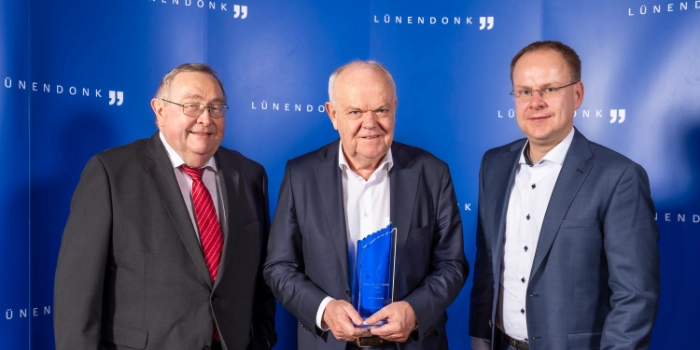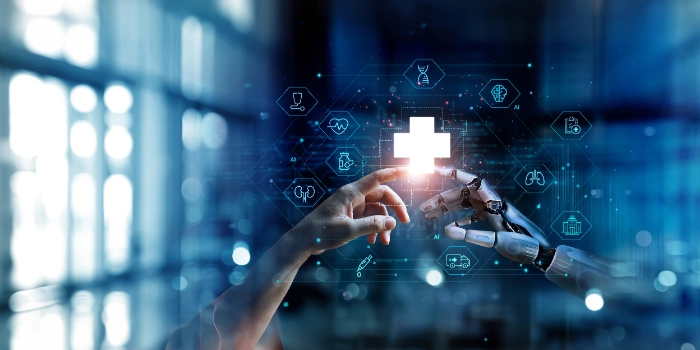“They now have exactly eight seconds to get to the other side,” says smart city expert Joachim Schonowski, his eyes fixed on the pedestrian traffic light at the beginning of Bismarckstraße. Opposite, on the other side of the highway, a small crowd of pedestrians is waiting. Another 50 meters away, at the edge of Ernst-Reuter-Platz, three police officers from a bicycle patrol are standing on the sidewalk. Anyone who doesn't make it in the eight seconds gets stuck on the traffic island, in the middle of the highway - or has to cross one of the lanes on a red light.
Ernst-Reuter-Platz is one of Berlin's most important traffic junctions. The B2 comes from the Polish border, passes Alexanderplatz, the Brandenburg Gate, the Victory Column and continues west through Reuter-Platz. Up to the Brandenburg Gate it is Berlin's Unter den Linden boulevard, at the Victory Column it is the Straße des 17. Juni, behind Ernst-Reuter-Platz it becomes Bismarckstraße and later it becomes Kaiserdamm.
15 traffic lights and 5 lanes
Ernst-Reuter-Platz is now known primarily for not working: It's a four- to five-lane roundabout, itself interrupted by five traffic lights. On top of that, there are about ten traffic lights for cars trying to get on or off. “A roundabout that takes you a half hour to walk around,” reads one of the current 2,170 Google reviews. “...so confusing and confounding you're glad to get out unscathed every time. “Unfortunately, it didn't work for me.... A big thank you to the police, who were on site very quickly and handled everything calmly and professionally,” writes user Jörg in his Google review of Reuter-Platz.
Joachim Schonowski is wearing a black jacket, black cap and green canvas shoulder bag. He looks at Ernst-Reuter-Platz like a car mechanic inspecting a running engine with the hood open. In his projects for msg, Schonowski researches how cities work - and how technology can make them more livable. He knows Ernst-Reuter-Platz well, having worked here himself for 11 years.
„Berlin is for everyone, including motorists“
Change of location: a traffic light on Hardenbergstraße. It's cold and noisy and somewhat unusual to simply be standing still on a Thursday morning on a street where everyone else just wants to get on and go somewhere else. But the longer you stand there, the better you understand what’s actually happening here: You notice that the cyclists in rush hour traffic already know the traffic light cycles, and have long since found their own ways across the square.
After just three minutes, the first cyclist races past us, just barely crossing on red before the cars start, and continues cycling on the other side of the street on the sidewalk. At the next red phase, a student on a bicycle stops next to us. His name is Elijah. Joachim Schonowski asks if he also occasionally runs a red light here. “Most of the time I don't wait at the traffic light here, I just ride further down the road where there are no lights,” says Elijah, pointing down the six-lane Hardenbergstraße.
“Hmm, it shouldn't really be like that,” Schonowski says when Elijah is gone. “You can control traffic lights, after all. When an official visit motorcade drives past here, they all turn red. It's just a question of who and what traffic you give priority to.” To do something like this better, the smart city expert says, you would first need data that tells you when how many people want to cross here. “What's it like at lunchtime, what's it like in the evening, what's it like at night, weekdays, vacation periods...” says Schonowski, casting his expert eye over the traffic light poles. “You could also put sensors on the traffic lights to measure something like that and determine traffic flows. The data could help to allow cyclists and pedestrians to cross whenever their numbers are high. Ideally, you'd build a digital model of the intersection to analyze its function.”
At the next traffic light phase, Schonowski crosses over himself, walking alongside the four-lane road to a bicycle station for rental bikes in front of the Technical University. “Berlin is for everyone, including motorists,” reads a large election poster in the middle of Marchstraße. “Ideally, though, planning like this is not just about pedestrians and cyclists, but also about where cars actually come from,” Schonowski observes. “Would it perhaps be more efficient if they drove a different route? Or would they drive here if rental bikes and buses were better aligned with the needs of the users and they might even be faster than in a car? But even for that, you would first need more data..."
A question of data sovereignty
After crossing Marchstraße and Otto-Suhr-Alle, we reach the 22-story Telefunken skyscraper. “Technically, it would be no problem to collect the data needed for this kind of digital model of an intersection. The sensors for this could not only be on traffic lights, but also on lampposts or on city vehicles, such as garbage trucks or buses. Of course, this could also be done anonymously to protect citizens' privacy,” Schonowski explains.
“Private rental services for scooters, bicycles and cars also collect data, of course - it's just that they often don't share it with the cities in which they operate. This is then, of course, a question of data sovereignty. What if municipalities at least got the traffic data in return for companies using the urban infrastructure for their rental services?” asks the smart city expert.
The only sticking point is that all this data must then also flow into a system so that a city administration can do something with it. With such data, Schonowski explains, you could not only build a digital model of an intersection, but a digital model of a city - “digital twin” is the name of this method.
Depending on how extensive such a model is, it could also be used to simulate what happens during major events: Where exactly would more buses have to run when Taylor Swift performs at the Waldbühne? Or when the DFB Cup final takes place? Gradually, we could also expand such a model, establish correlations and causalities, and make better decisions with the data: What is the air quality like in places like Ernst-Reuter-Platz? How would it change if there were more buses instead of cars? Or electric cars? What does the charging infrastructure need to look like in a city like Berlin, and how many charging stations would be needed? Does it even make sense for a big city to rely on electric cars instead of public transport?
After a lap, we end up back at the “hopping traffic light”, as Joachim Schonowski calls it, on Bismarckstraße. The green phases of the two lanes are switched in quick succession. You can just about get across in one direction, but not in the other. The pedestrians across the street have also already factored in the “hopping traffic light”: When the traffic light turns green, they hurry, just make it to the middle of the road, rush to the other side of the road when the light turns red, and arrive just as the traffic starts moving again.
When Schonowski makes it to the other side, the bicycle patrol is still busy checking a delivery driver. He asks the police officers if Ernst-Reuter-Platz is a problem. They have no desire to talk. “Do you know the intersection at Frankfurter-Tor?” one of them says, looking around meaningfully with raised eyebrows. It's Berlin's most dangerous intersection.
After the visit to Reuterplatz, we go in search of a rental car - we want to continue at Alexanderplatz. Are things perhaps better there?


